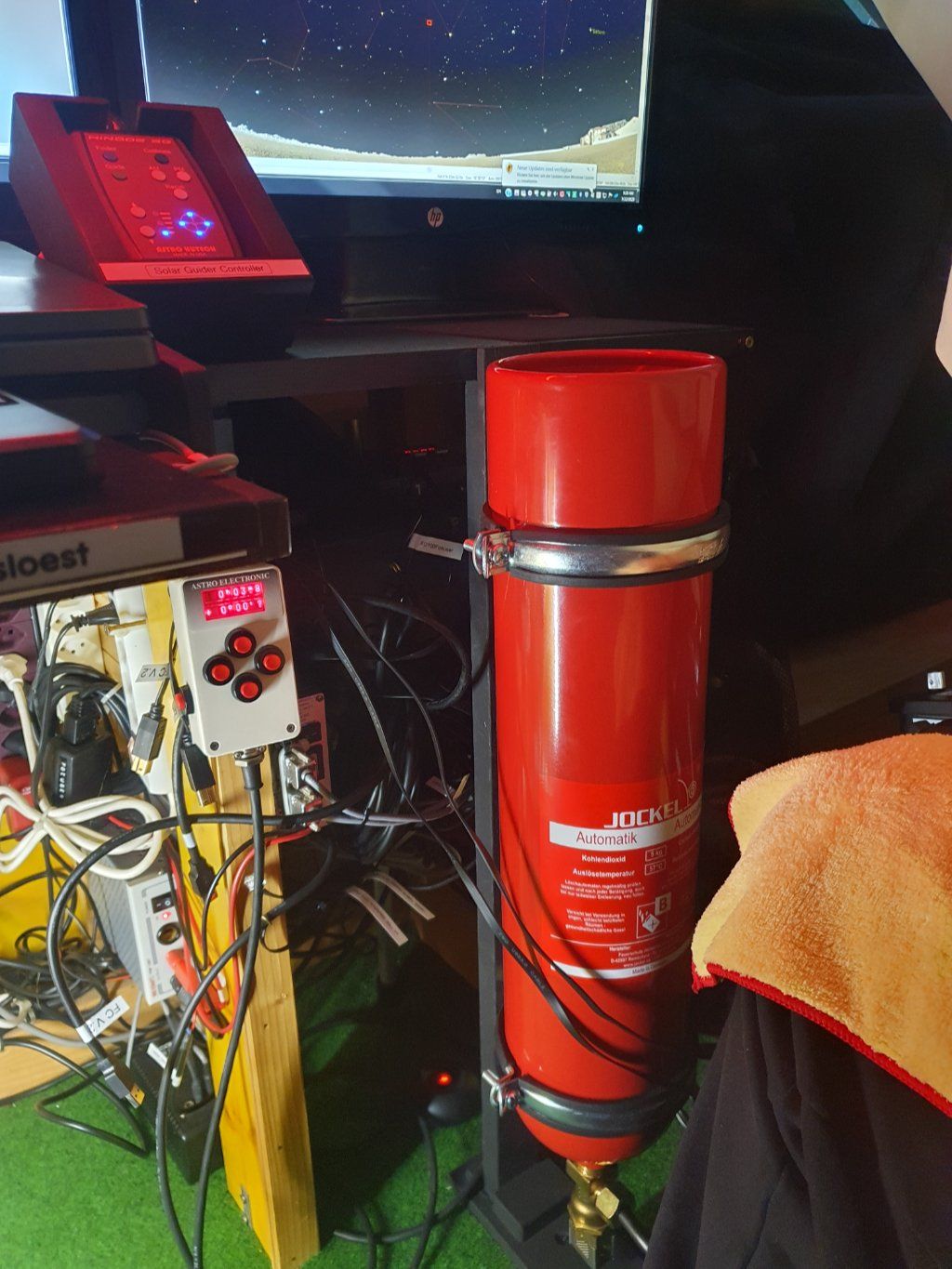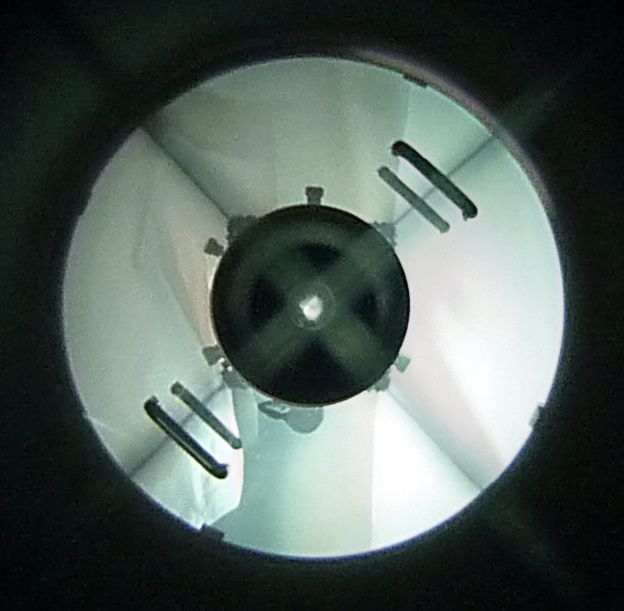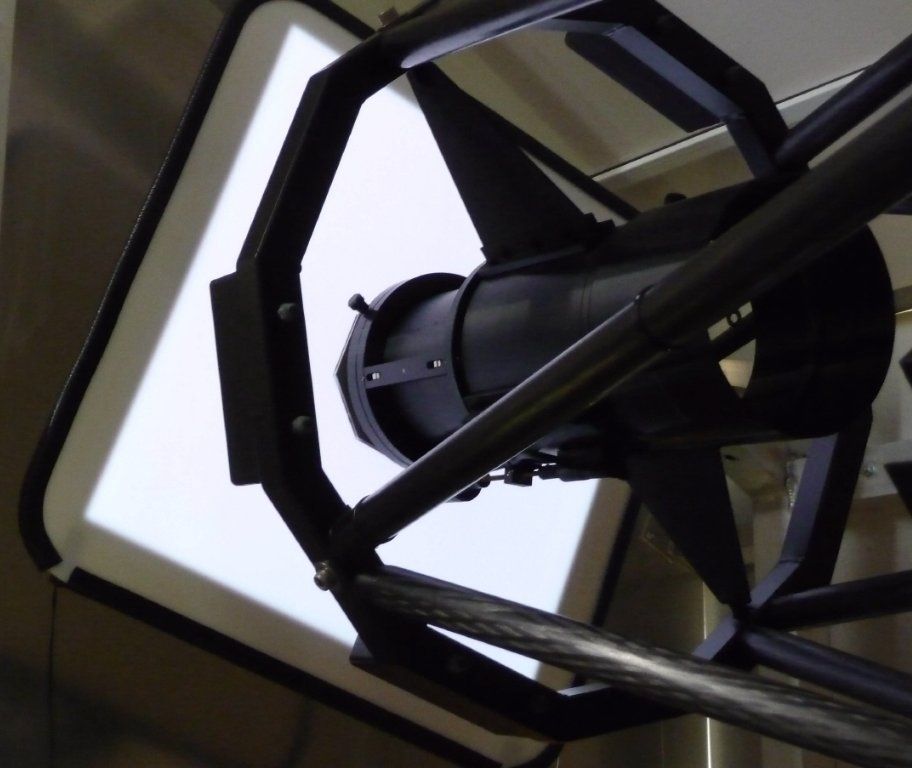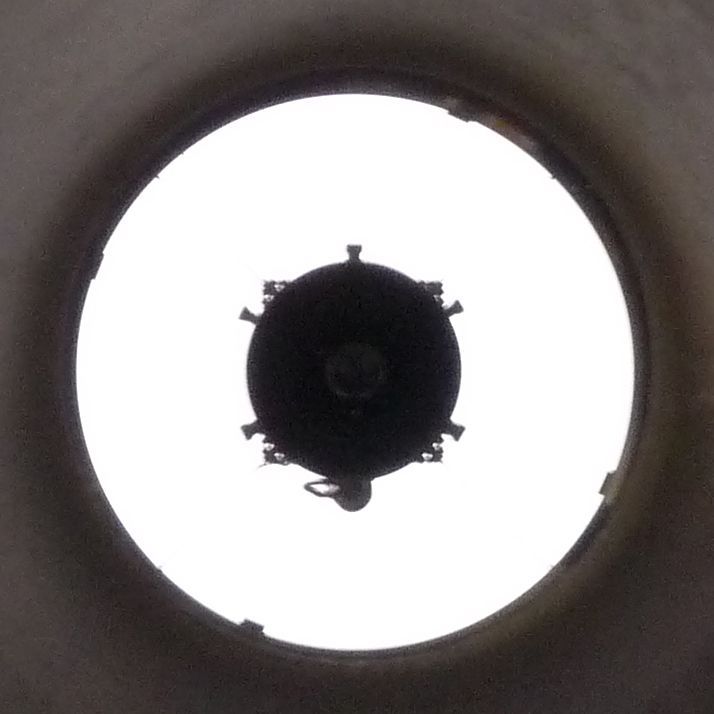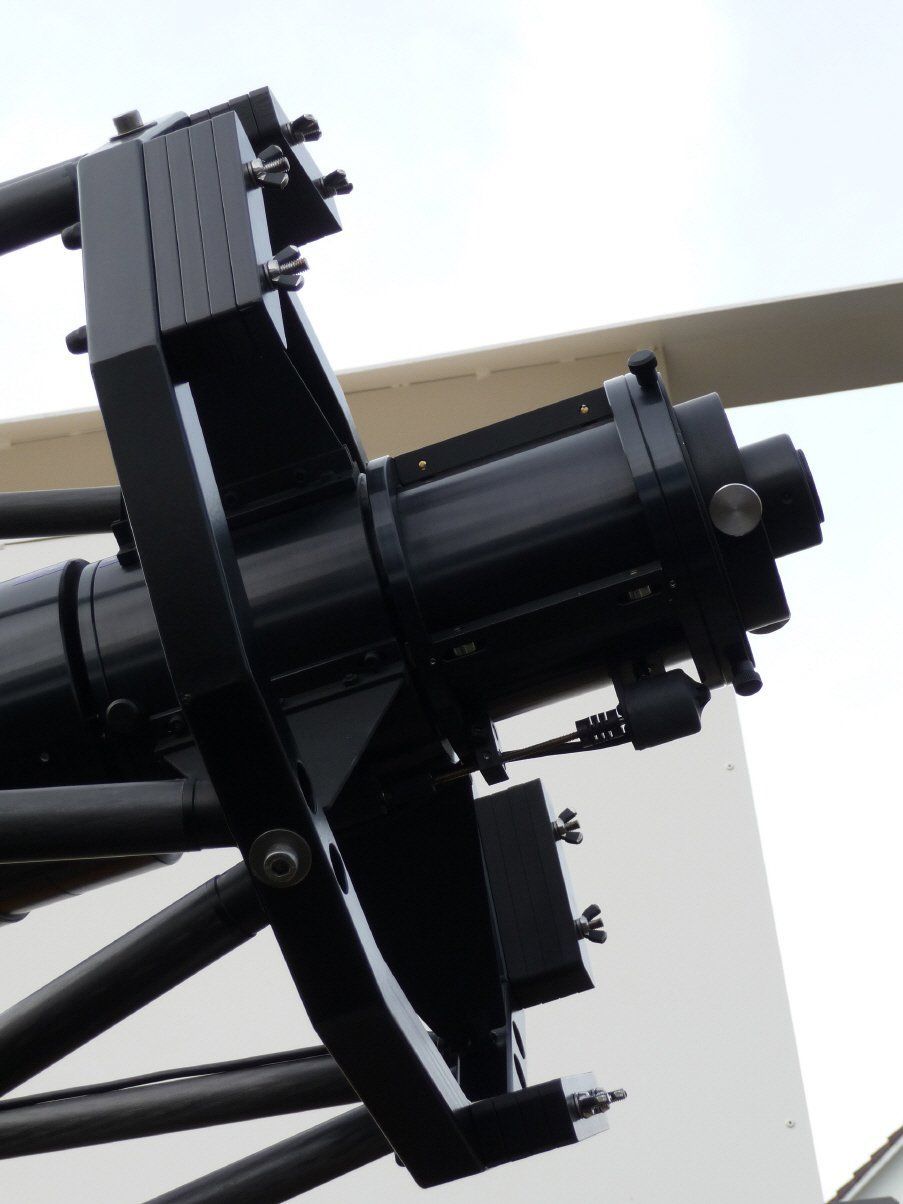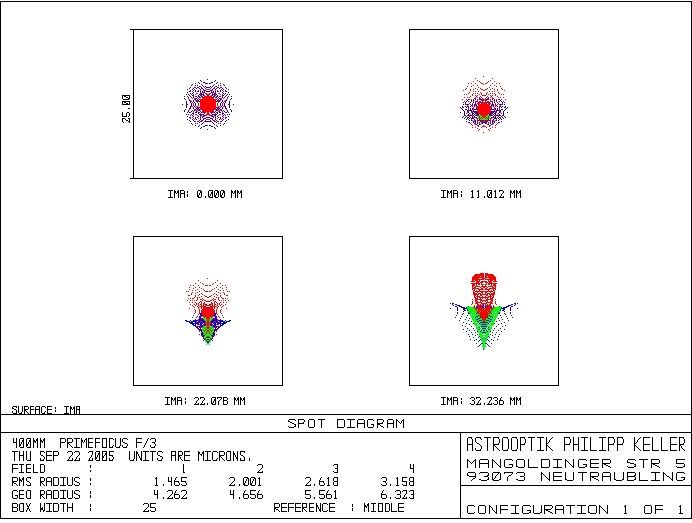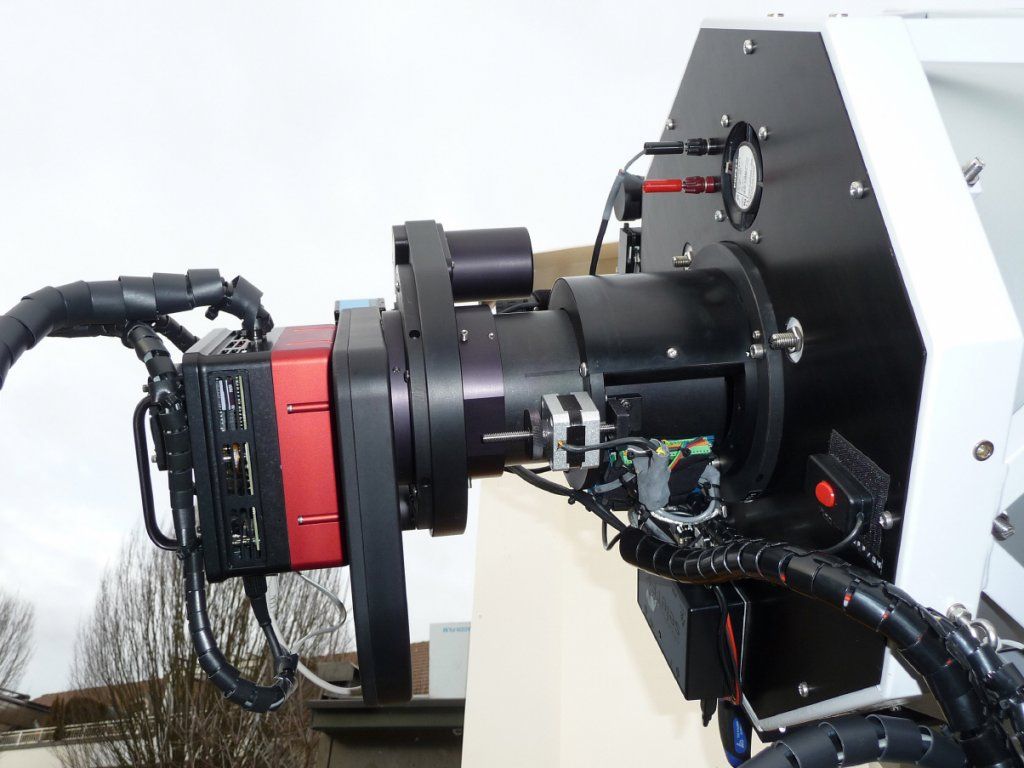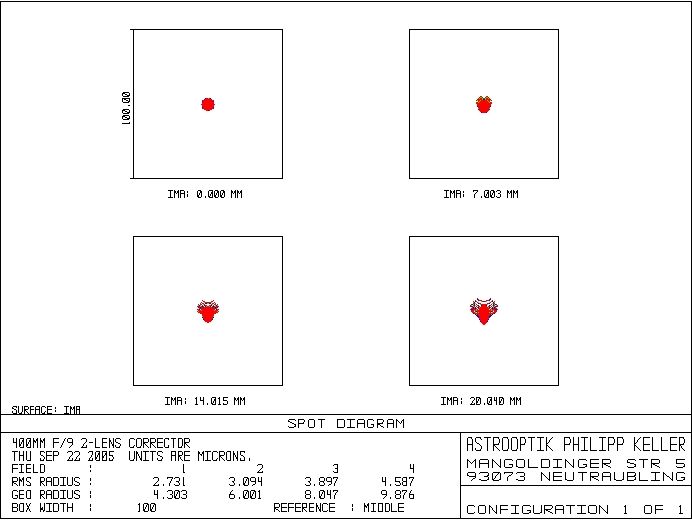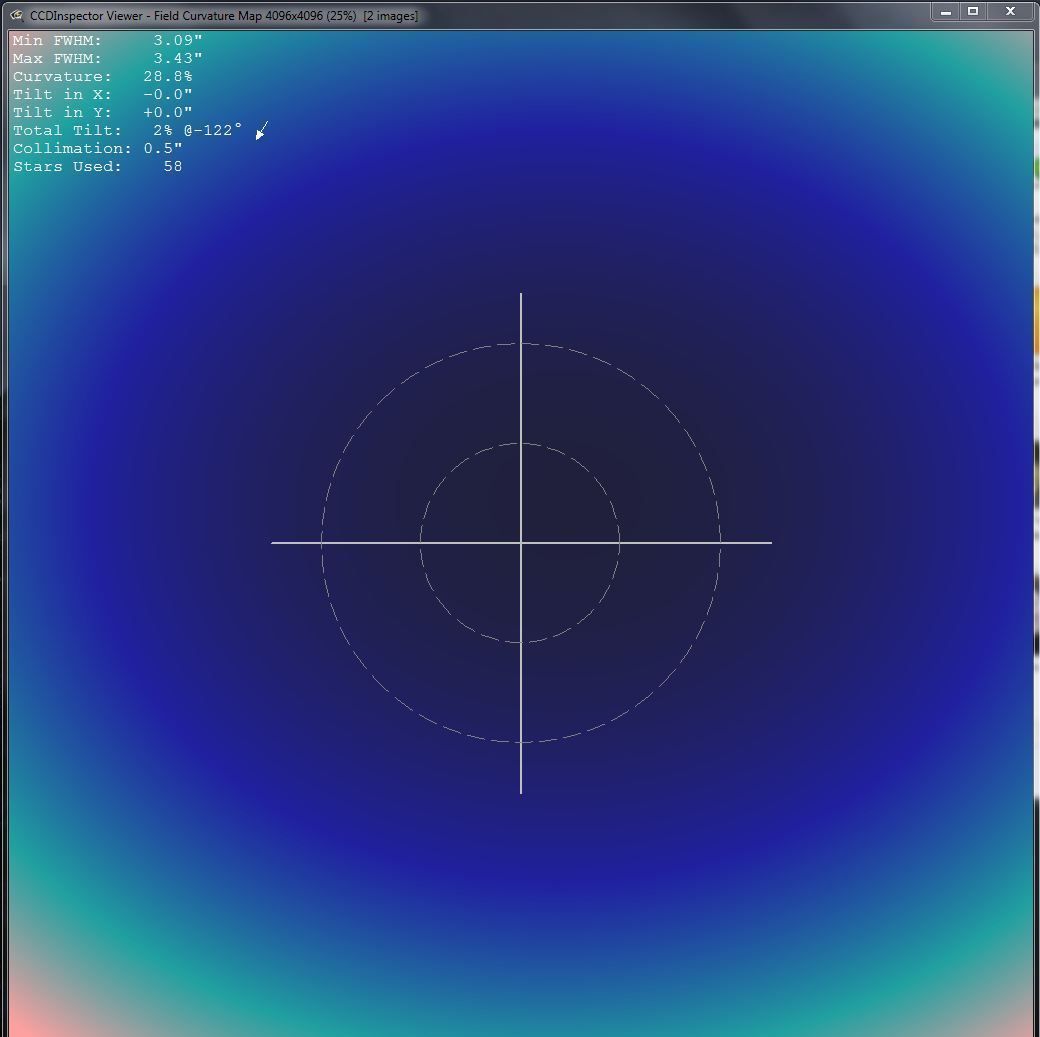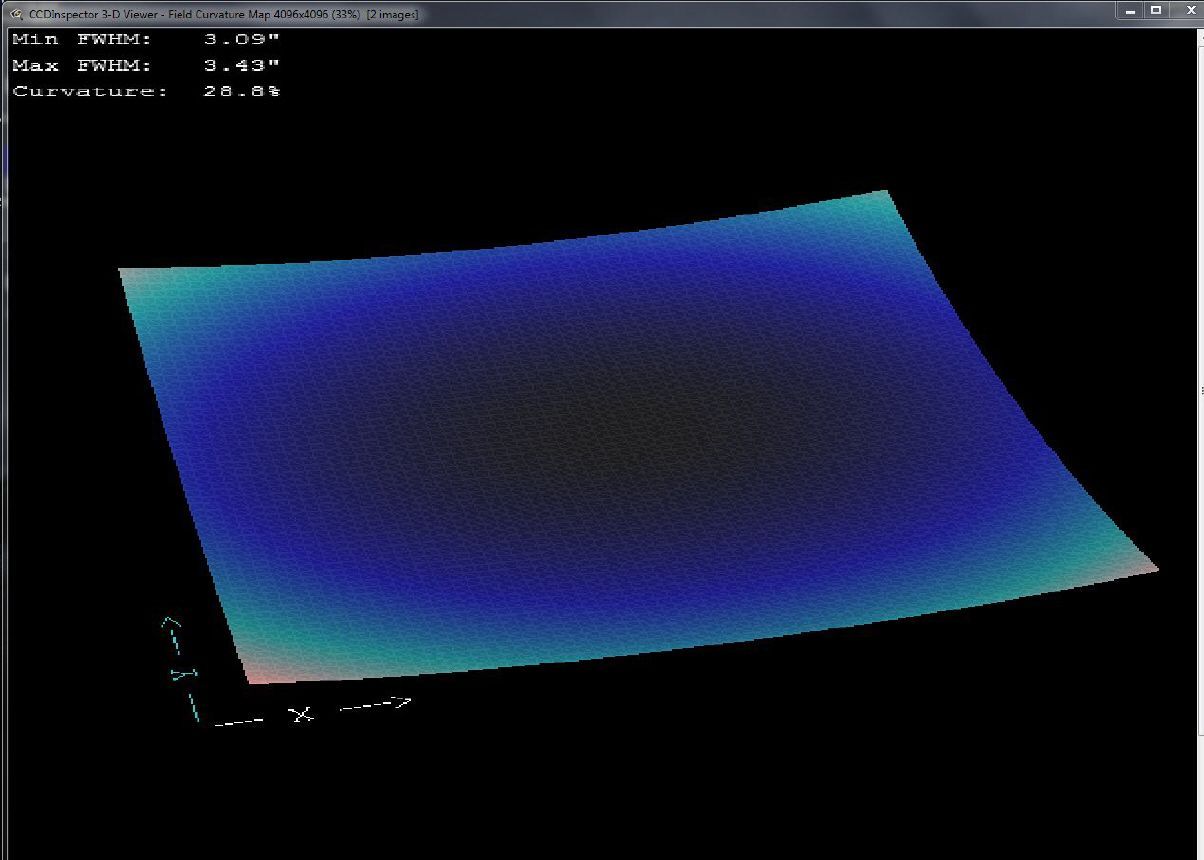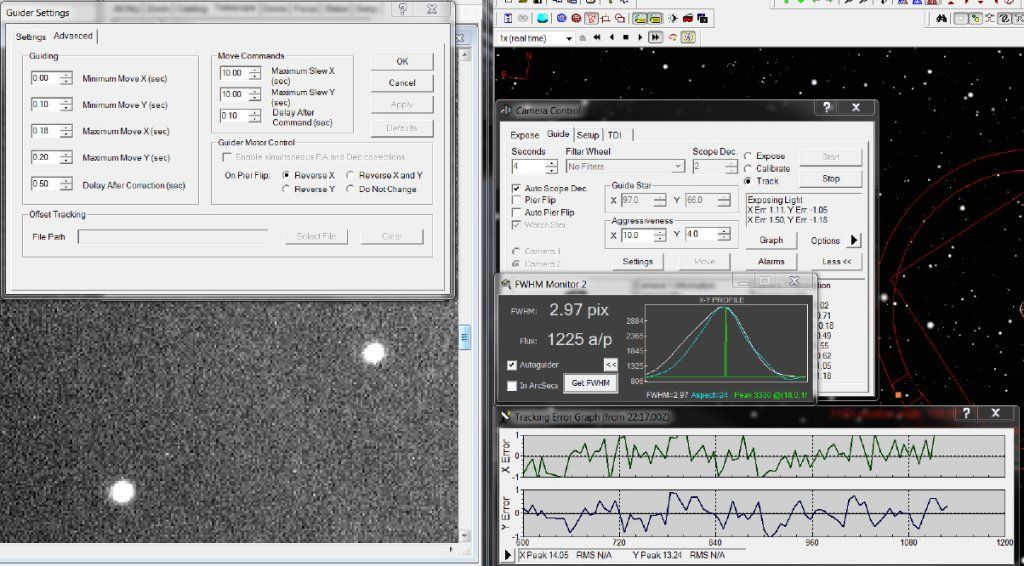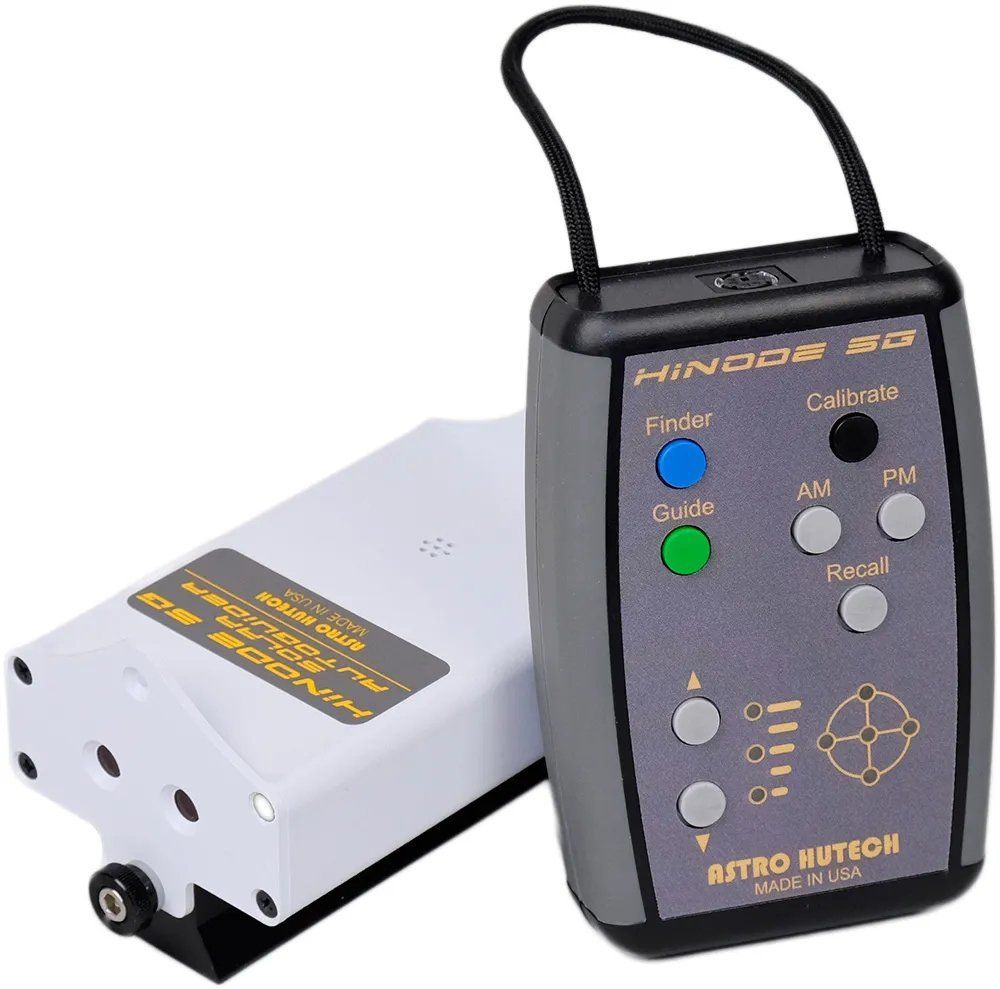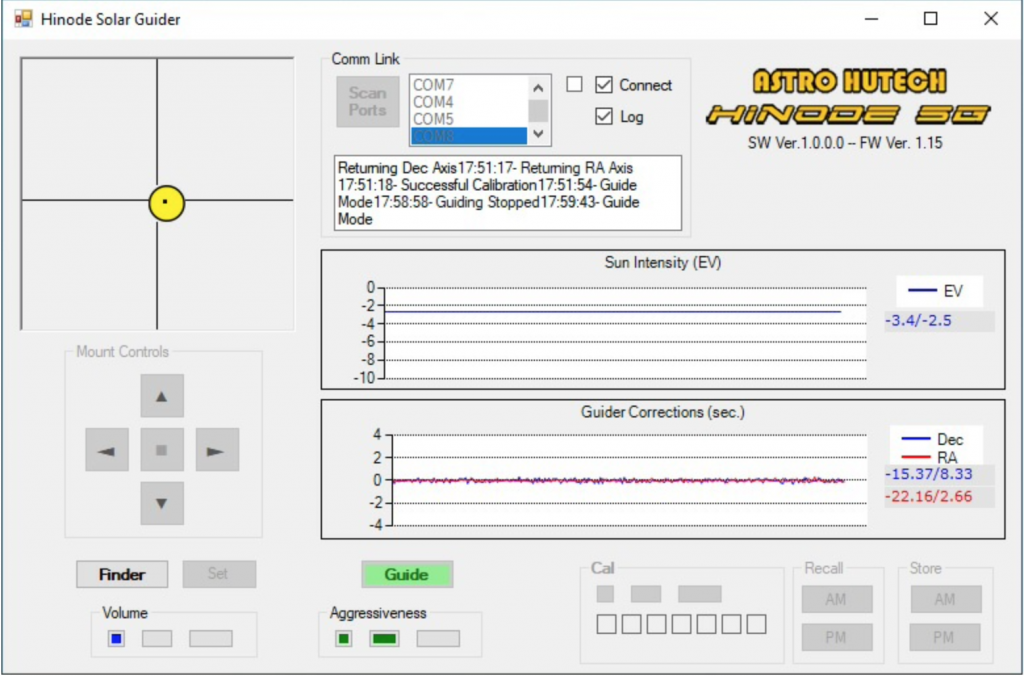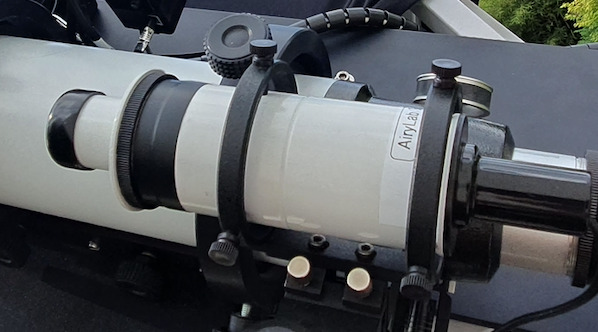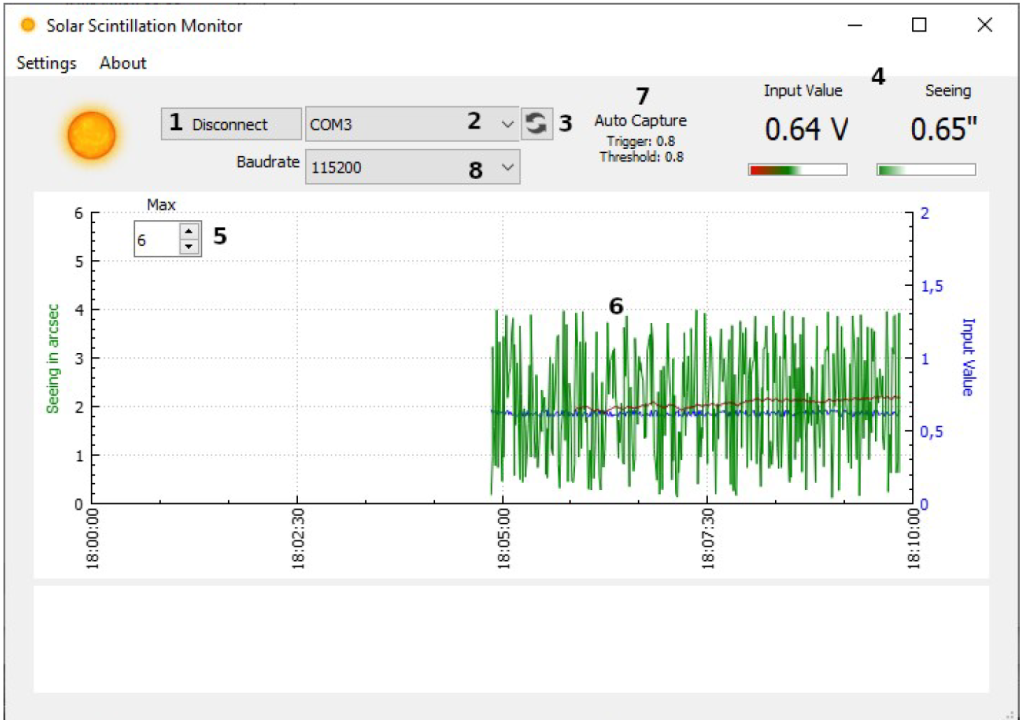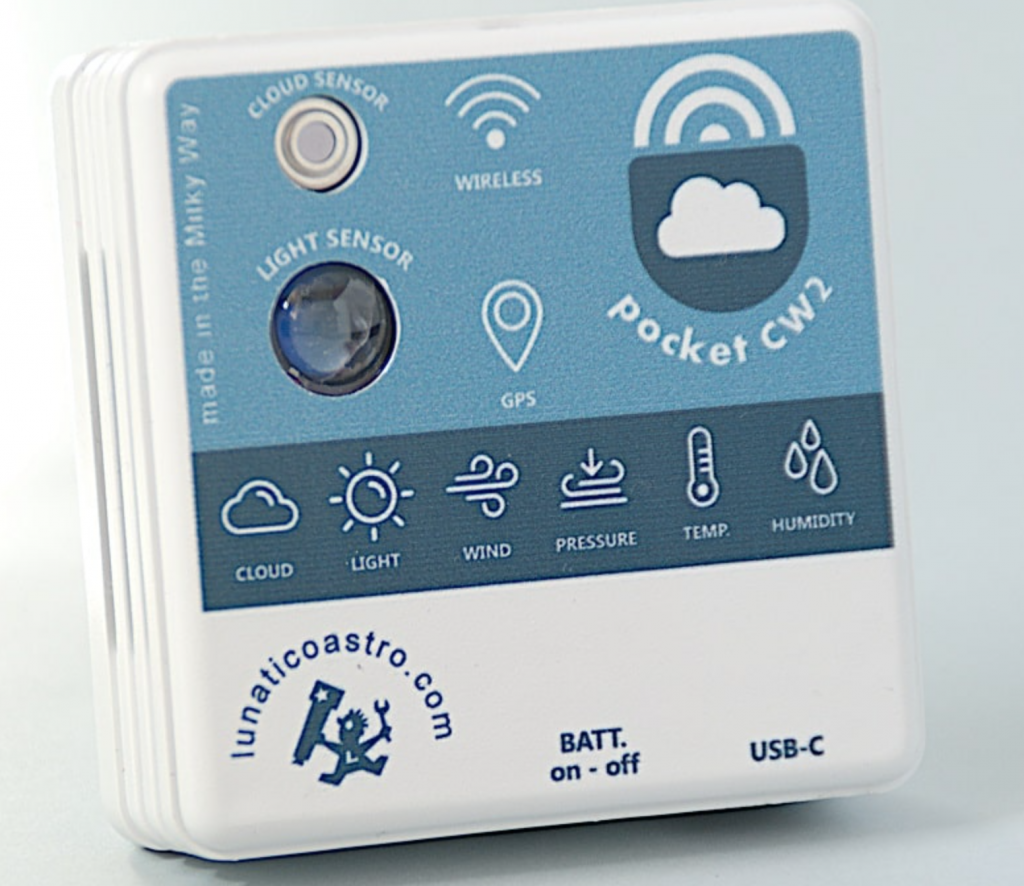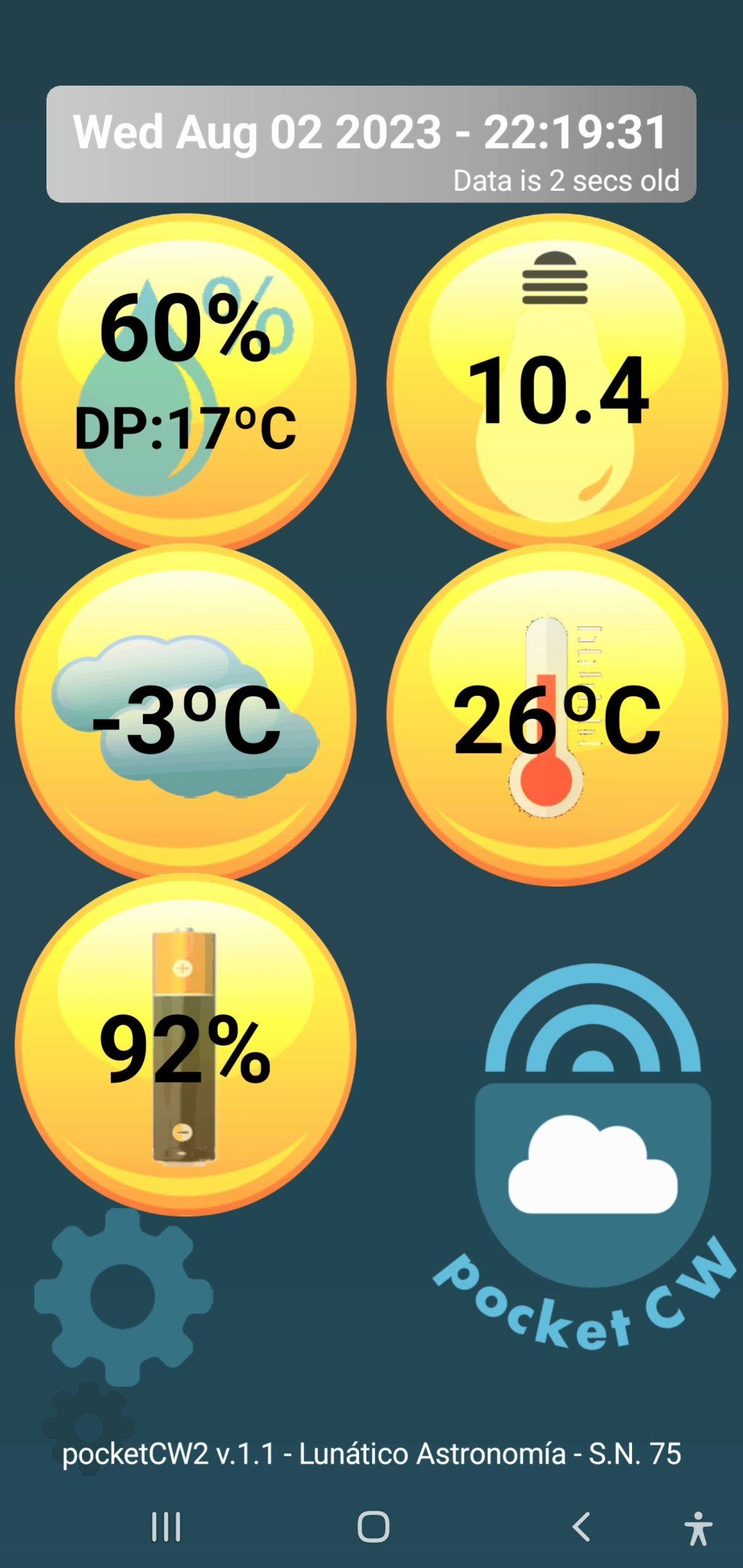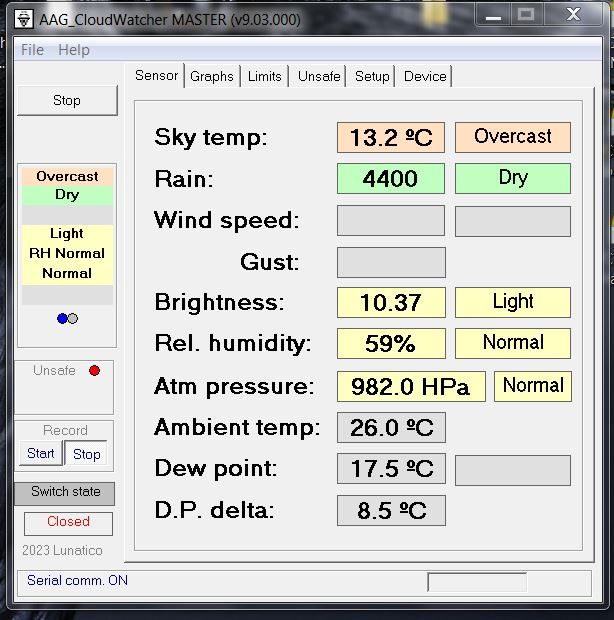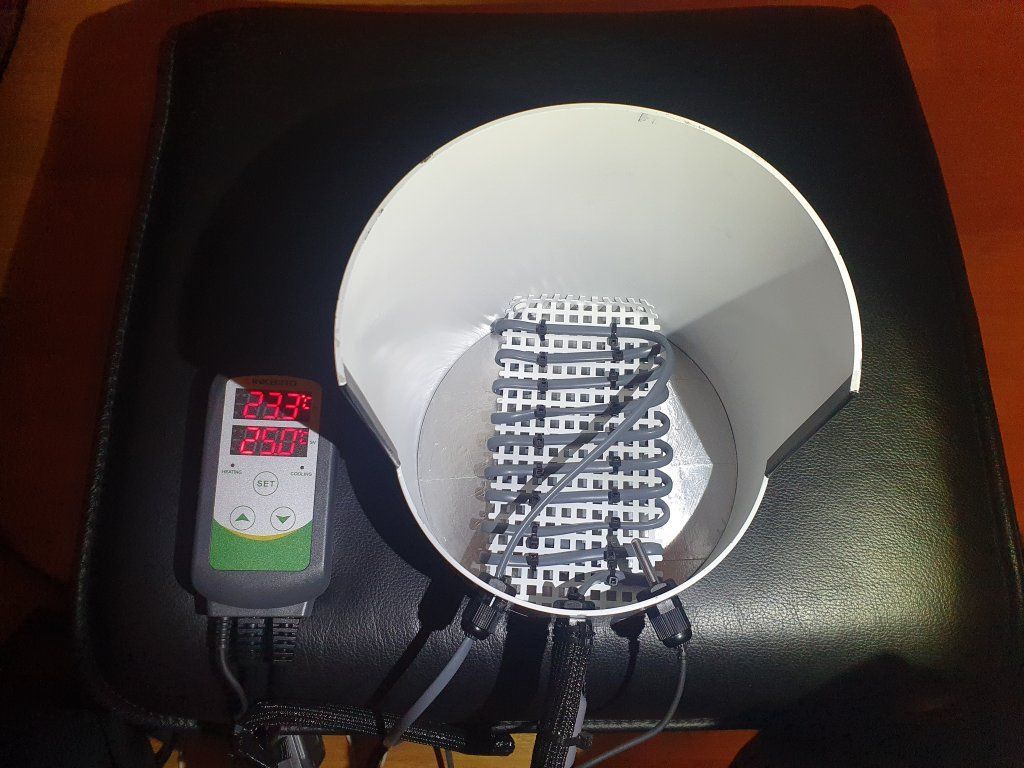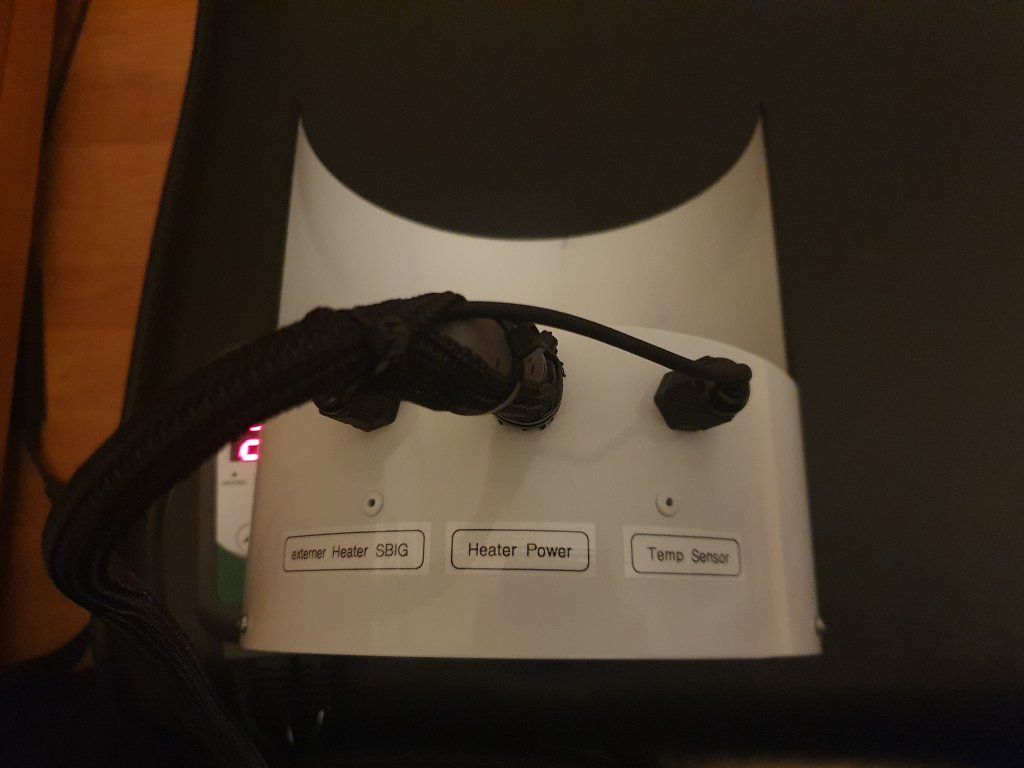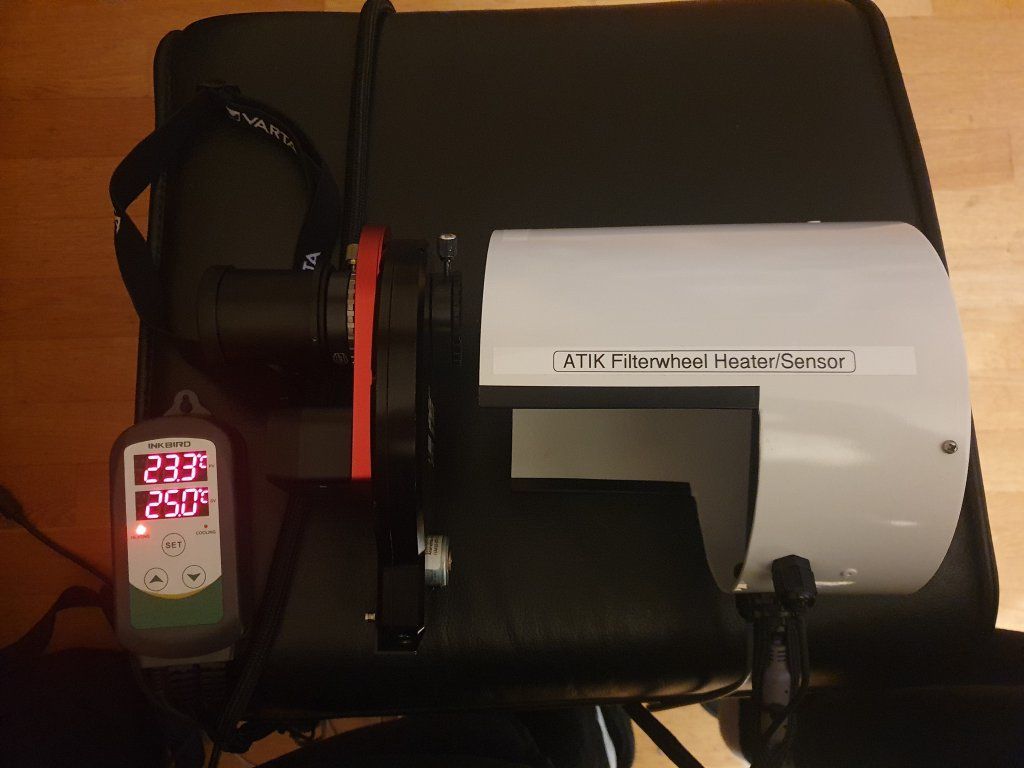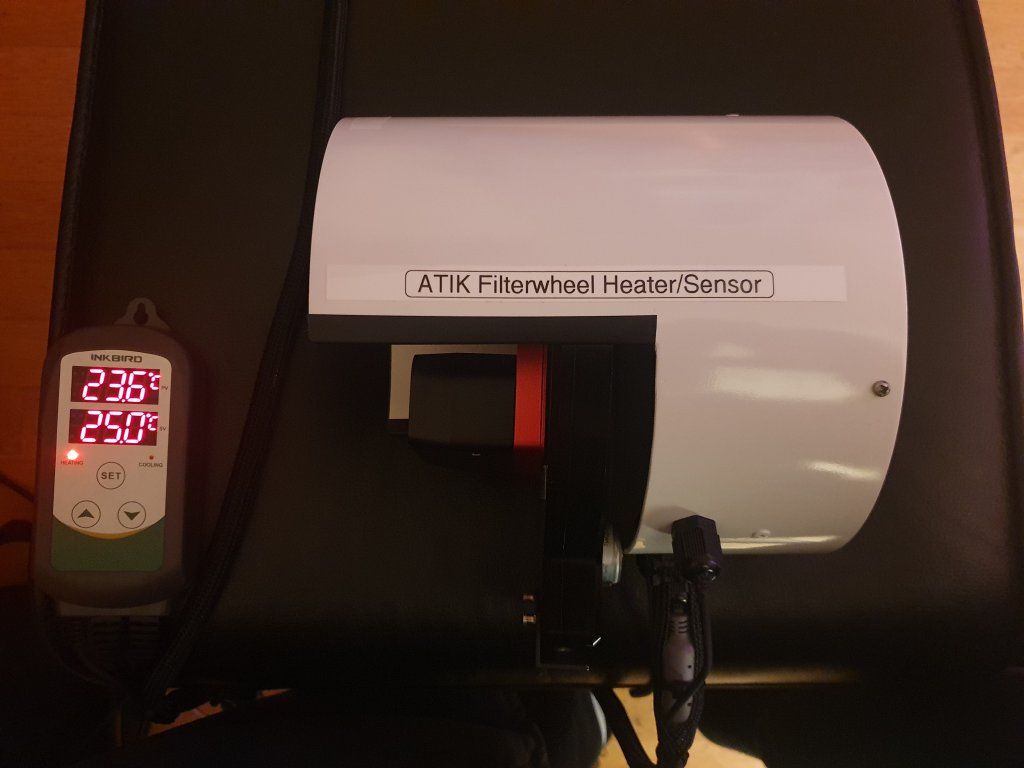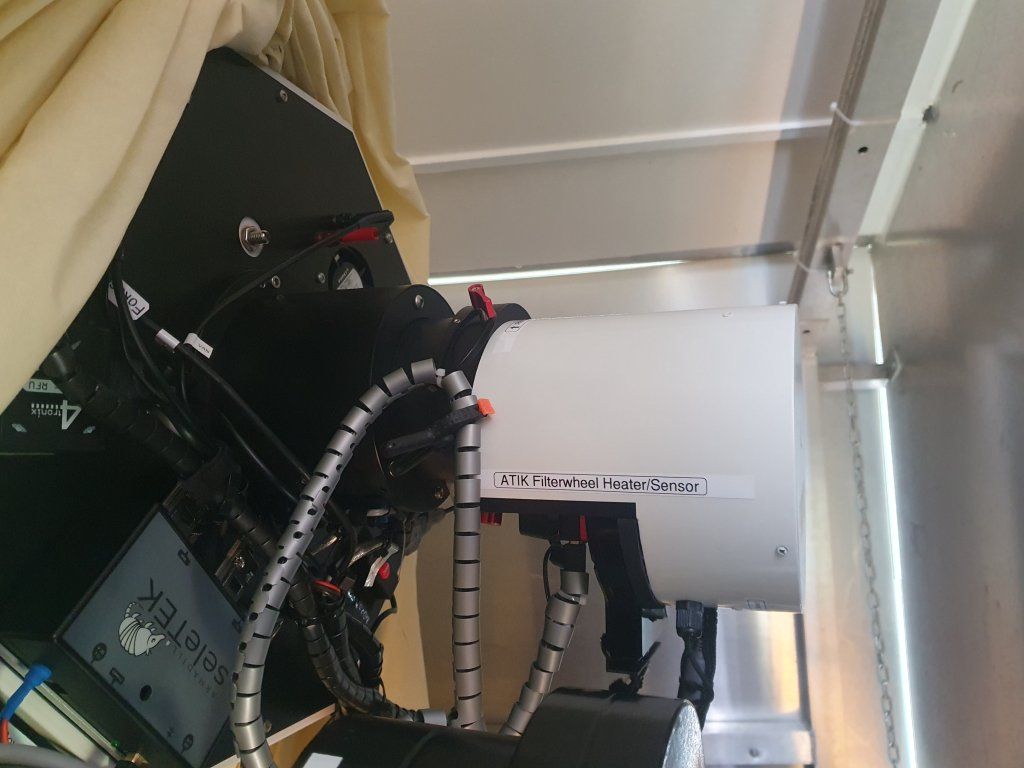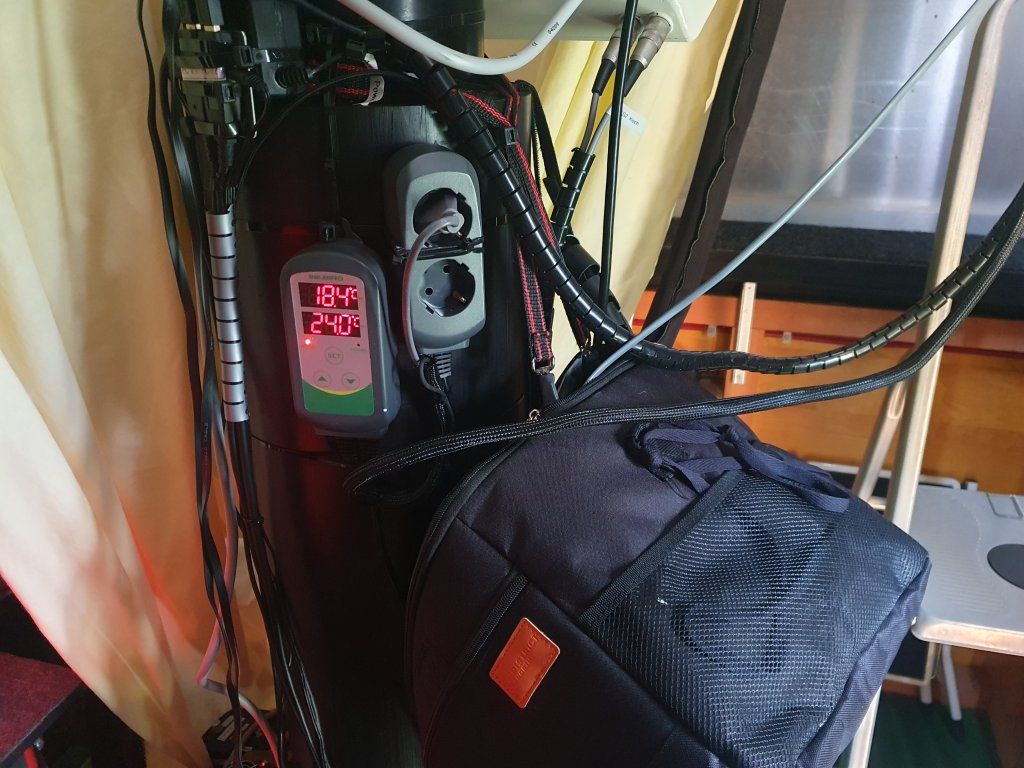Tools
Primary Corrector ASA400
The Primary Focuser of the ASA/Keller Cassegrain is located in f3/1200mm.
* It is driven by a Faulhaber motor and linked to an encoder all triggered by a SmartFocus controlbox and software.
* The Primary Corrector (diagram by P Keller). For fast speed and huge fields. The prime focus is permanently installed in front of the secondary mirror and by removing the secondary in its holder you allow the light path to reach the prime focus. Switching between the 2 focal configurations takes only 1 minute. The spot diagram shows a field diameter of 64mm, so you are ready even for very large CCD's with this telescope. The backfocus is 79.31 mm measured from the front of the lensring.
Secondary Corrector ASA400
The Secondary Focuser of the ASA/ Cassegrain is located in f9/3600mm.
* It is driven by a stepper motor, linked to an encoder SMCI33/ Nanotec and the Amardillo/Seletek Controller respectively, all triggered by software.
* These are the spot diagrams for the 2-lens Corrector (diagram by P Keller), which is placeable in the secondary focuser as a Flattener and Coma Corrector. This Corrector does not change the focal length. Full usable field is 80mm diameter. The backfocus is 139.57 mm measured from the center of the lensassembly. For the SBIG STX16803 the 139.57mm are reached by ( 22.6mm Center of Secondary-Corrector-Lens to the front of Rotator+38mm Rotator+13mm Adapter+33mm Filterwheel+33mm SBIG-CCD distance)
Autoguiding DeepSky ASA400
The MaximDL5 software autoguiding parameters:
* 0.25x guiding correction speed in RA
* The RA and DEC corrections are not linked!!! The LX200 protocoll was not capable to trigger both in parallel... now it works with an average of a minimum of 1 pixel on the 80kg equipment frontsite...
* 2x2 Binning on guiding chip (with one autodark) at 4 sec exposures and 0.5 sec delay in between
AiryLab
Solar Scintillation Monitor
* The sensor measures the quality of the sky during the capturing of the sun. It allows the observer to evaluate the best local conditions during the daytime.
* In order to protect the Selen Photodiode from the UV Light of the sun an UV Filter is placed in front of the sensor.
Lunatico Pocket CW2
-mobile weather alert-
* Configurable alarms for any of the readings, safe, unsafe, battery level and data age (“watchdog” function), however you want to set them—with snooze, ignore period. PC compatible and smartphone app)
* Cloud detection
* Relative humidity measurements.
* Ambient temperature readings.
* Brightness readings (Sky brightness measurements in mpsas (magnitudes per square arc second)).
* Ability to measure sky quality
* Atmospheric pressure readings
* Wi-Fi
* Full ASCOM compatibility
* PC connection through USB-C, martphone app
* Power supply now through USB-C; or with a rechargeable LIPO battery
Heating of Primary Mirror with a Digital Dew Controller
* The primary Lomo Mirror 400mm is taped from the back with a flexible heating cable which is controlled by the Humidity Controll II (Lucky Reptile).
* It keeps the mirror dry during the storage time in the observatory (80-100% huminity leads to active heating) It is switched off about 6 hours before an observation session in order to allow the equilibration to ambient temperature.
Heating of the ATIK filter wheel (9 positions) and the SBIG camera/ SBIG Filter wheel with a Digital Temperature Controller and Silicon Heater cord
Some filters are fusions of special coated filters, separated by Canada Balsam. The CB is sensitive against huminity and freezing temperatures. A heater box was build to keep the filters save during storage at very cold days.
Safety against Fire and 'Uninvited visitors'
* CO2 Fire 5kg Extinguisher (automatic release at 57 degrees celsius)
* The electric network is protected against lightning strikes and cross currents by a special network wiring
* Burglary Protections (several inside and several outside)...
